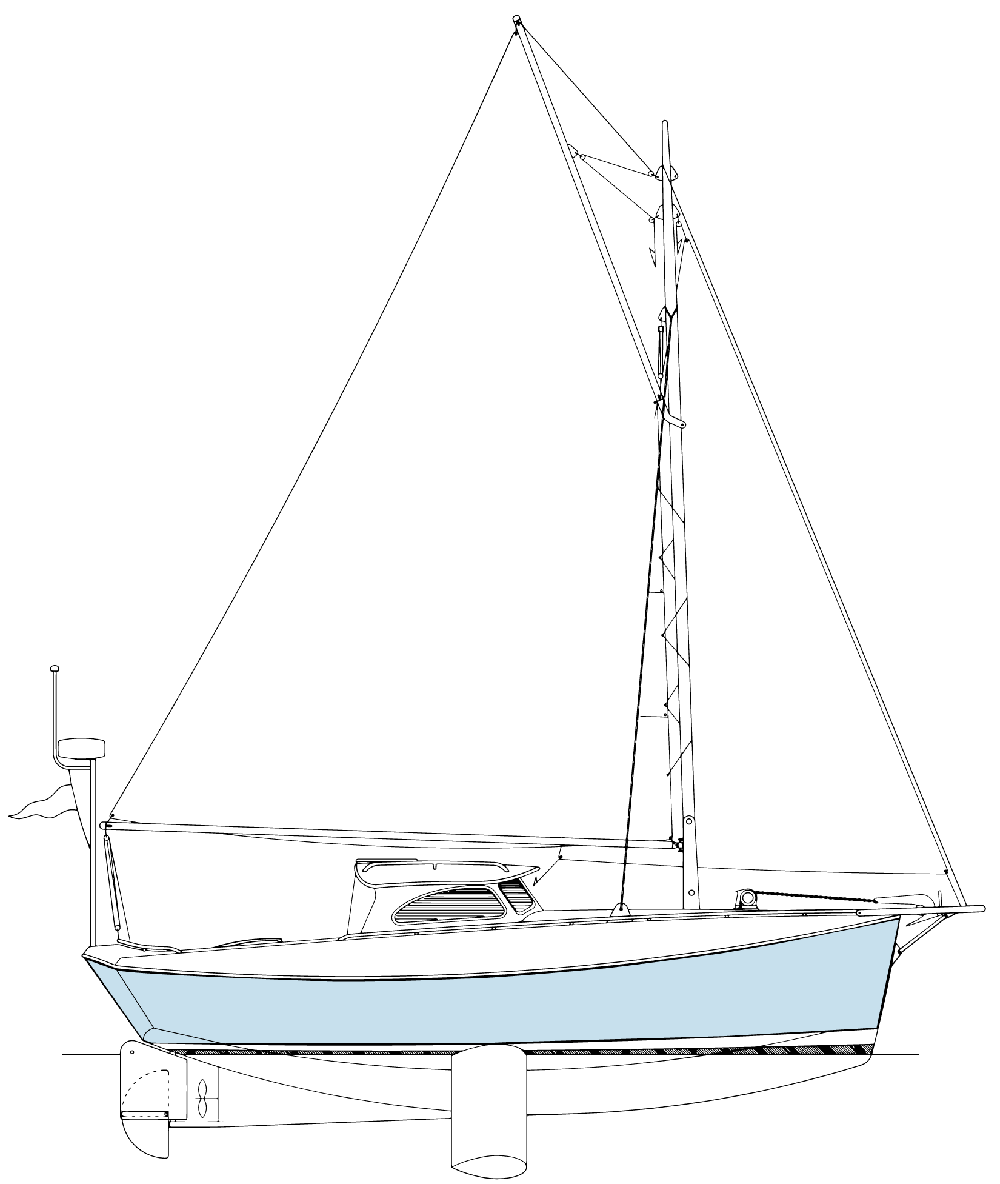Geoduck (Steve's little motorsailer)
This innovative aluminum design comes from an unlikely source
I am not sure where to start telling you about my friend Steve’s skills. He has so many. I’ll just say Steve is a craftsman who can build anything. He built his own plane, he’s a commercial pilot, then designed his own floats and retractable landing gear to turn the plane into an amphibian. He inherited an aluminum 34-footer that he modified significantly after teaching himself to weld aluminum. So when Steve said he was going to design a new boat for his next project I was not surprised. The surprise was this is a boat I could own with pride.

The hull is a double chine, conically developed, twin daggerboard type that I find very attractive. The D/L is 324 so this is not a light boat at 8,000 pounds. The L/B was restricted to make the boat trailerable. The L/B is 3.09. Draft with the boards down is 4 feet and boards up is 2 feet 4 inches. The boards also serve as legs for beaching the boat. This is something Steve likes to do with his current boat. Steve beached his current boat in front of my beach shack. My neighbors were very concerned, “Is he OK?” The bottom hull panel is dead flat giving the boat more or less U-shaped bow sections. The BWL is wide for stability and volume below. The rudder has a small, retractable centerboard section to give it more span for sailing. Note the knuckle in the topsides that gives the boat a sort of false sheerline. Your eye sees this line and not the much higher deck edge with its reverse sheer spring. All in all I find this a very attractive hull.

This is a boat designed for the Pacific Northwest and inside steering was a requirement given how much rain we get. A true pilothouse on a 26 foot 4 inch LOD boat could be a real aesthetic challenge, but Steve nailed it with this shapely little pilothouse. There is a steering station to starboard with another chair to port and a quarterberth aft of that. Moving forward there are galley components on both sides of the boat with settee berths forward of that. A dining table attaches to the mast compression post. There is a head in the fo’c’sle. If you want to cruise “simple style” this layout has everything you will need.
Steve likes the gaff rig. A short, pipe-frame sprit gets the headsail forward and doubles as a place for the anchor rollers. SA/D is only 15.52 but that is respectable for a motorsailer. The long boom allows the main to be sheeted to the transom. The mast is stepped in a tabernacle to allow the rig to be easily lowered for trailering.

Ballast will be 1,500 pounds of lead in the bilge. I went up and helped Steve melt lead in his backyard so he could re-ballast his current boat. That was fun; men with fire and molten metal. If you enjoy welding aluminum this would make a fun project. I can assure you that in true Steve fashion, the details are well thought out.
It’s fun to review a design that comes from a good friend. For his first-ever boat design I’d give Steve an A-plus.
LOA 30’; LWL 22’3”; Beam 8’6”; Draft 2’4” (boards up) to 4’ (boards down); Displ. 8,000 lbs.; Ballast 1,500 lbs.; Sail area 388 sq. ft.; SA/D 15.52; D/L 324; L/B 3.09 Auxiliary 20- to 30-hp; Fuel and water 200 gallons total (split as owner specifies)
Our best estimate of the sailaway price
$155,000 for a custom build or $75,000 home-built

Comments